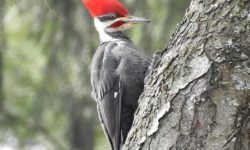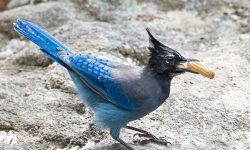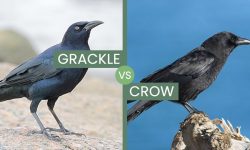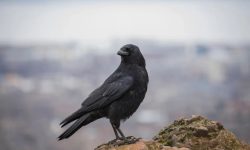Swans are among the most elegant and majestic birds in the world. Their graceful movements, long necks, and serene presence make them a favorite among bird enthusiasts and nature lovers. But have you ever wondered what a group of swans is called? Unlike some animals that have a single collective noun, swans have several terms depending on their location and activity.
In this article, we will explore these collective nouns, their meanings, and fascinating facts about swan behavior in groups.
Common Collective Nouns for Swans

A Bevy of Swans
One of the most commonly used terms for a group of swans is a bevy. This term generally applies to swans when they are on land or water, calmly resting or feeding. The word “bevy” is often associated with elegant groups of birds and is also used for larks and quails.
A Wedge of Swans
When swans are seen flying in formation, they are referred to as a wedge. This term describes the V-shaped flight pattern that many swans adopt when migrating. The wedge formation is crucial for reducing air resistance and conserving energy, allowing swans to travel long distances efficiently.
A Herd of Swans
Although more commonly associated with mammals like cattle, the term herd is sometimes used to describe a large gathering of swans, especially when they are on water or grazing near lakes and ponds. This term reflects their social nature and tendency to stay in groups.
A Flight of Swans
Another term used to describe swans in motion is a flight. This term is typically used when swans are seen soaring through the sky. Since swans are powerful fliers, “flight” is an appropriate term to depict their impressive aerial journeys.
A Bank of Swans
Some sources also refer to a group of swans as a bank, although this term is less commonly used. It typically applies to swans resting on land, often near riverbanks or lakeshores.
Why Do Swans Form Groups?
Protection from Predators
Swans, despite their large size and strong presence, are still vulnerable to various predators, including foxes, raccoons, large birds of prey, and even humans. Being in a group offers them safety in numbers, a common survival strategy among many bird species. When swans stay together, they can better detect potential threats, as multiple eyes and ears increase their awareness of approaching dangers.
Additionally, swans can act collectively to deter predators. If a threat appears, the group may issue alarm calls, warning each other and taking defensive action. Adult swans, particularly the males (cobs), are known for their aggressive defense tactics, using their strong wings and beaks to fend off intruders. By remaining in a group, swans increase their chances of survival, reducing the likelihood of individual birds being targeted.
Social Bonding
Swans are naturally social birds, and forming groups plays a crucial role in reinforcing their social bonds. Many swan species, such as mute swans and trumpeter swans, are well known for their strong pair bonds, often mating for life. However, swans also form social connections beyond their mates, including family groups and even larger flocks.
Young swans, or cygnets, stay with their parents for several months after hatching, learning essential survival skills before becoming independent. Even after leaving their parents, juvenile swans often remain in small flocks for added security and companionship. Grouping together allows swans to interact, communicate, and establish hierarchies within their social structures, contributing to their overall well-being.
Migration and Navigation
For migratory swan species, such as tundra swans and whooper swans, traveling in groups is essential for survival. Flying in a V-shaped formation helps reduce air resistance, allowing swans to conserve energy during long-distance migrations. This formation creates an aerodynamic advantage, with each bird benefiting from the uplift generated by the one in front, making flight more efficient.
Additionally, migrating in groups aids navigation. Experienced swans that have previously completed migration routes can help guide younger or inexperienced members of the flock. This collective knowledge ensures that swans reach their breeding or wintering grounds successfully. Without these structured formations and group travel, individual swans would struggle to cover such vast distances efficiently.
Different Types of Swans and Their Group Behavior
Mute Swans (Cygnus olor)
Mute swans are among the most well-known swans and are often seen in parks and lakes. They are highly territorial, especially during the breeding season, and may not always form large groups. However, outside of the breeding season, they may gather in bevies on water bodies.
Trumpeter Swans (Cygnus buccinator)
These swans are the largest in North America and often travel in flocks. They migrate in wedges or flights, moving between their breeding and wintering grounds. Trumpeter swans are known for their strong family bonds, and parents often stay with their young for extended periods.
Tundra Swans (Cygnus columbianus)
Tundra swans are highly migratory and travel in large flocks. Their migration routes can span thousands of miles, and they rely on the wedge formation to conserve energy. These swans are frequently spotted in flight groups during seasonal migrations.
Whooper Swans (Cygnus cygnus)
Whooper swans are native to Europe and Asia and exhibit similar migratory behaviors to tundra swans. They are often seen in herds on water and in flights when migrating. These swans are also known for their loud, trumpet-like calls.
Historical and Cultural Significance of Swan Groups
Swans in Mythology and Folklore
Swans have long been symbols of beauty, grace, and transformation. In many cultures, they are associated with myths and legends. For example, in Greek mythology, Zeus transformed into a swan to seduce Leda, leading to the birth of Helen of Troy.
Swans in Literature and Poetry
The imagery of swans in groups has been a common theme in literature and poetry. William Butler Yeats’ poem “The Wild Swans at Coole” reflects the beauty and melancholy of swan gatherings. Similarly, Hans Christian Andersen’s fairy tale “The Ugly Duckling” highlights the transformation of an outcast duckling into a magnificent swan.
Swans in Heraldry and Symbolism
Throughout history, swans have been featured in coats of arms, royal emblems, and religious art. The sight of a bevy of swans was often associated with purity, elegance, and nobility. In England, swans were considered royal birds, and any unmarked swan belonged to the Crown.
Fun Facts About Swan Groups
- Swans communicate with each other using a variety of vocalizations and body language, including head bobbing and wing flapping.
- Some swan species, such as the trumpeter swan, can have wingspans of over 10 feet, making their flight formations even more impressive.
- Swans are known for their strong pair bonds, and even when traveling in groups, mated pairs usually stay close to each other.
- During migration, swans can fly at speeds of up to 50 mph and cover hundreds of miles in a single day.
- Cygnets (baby swans) often ride on their parents’ backs when swimming, providing extra protection and warmth.
Conclusion
A group of swans can be called a bevy, wedge, herd, flight, or bank, depending on their activity and location. These elegant birds exhibit strong social bonds and fascinating behaviors when traveling, resting, or feeding together. Whether gliding gracefully on a lake or soaring through the skies in a wedge formation, swan groups continue to captivate birdwatchers and nature enthusiasts worldwide. Understanding these collective nouns and the behaviors behind them adds depth to our appreciation of these magnificent birds.






